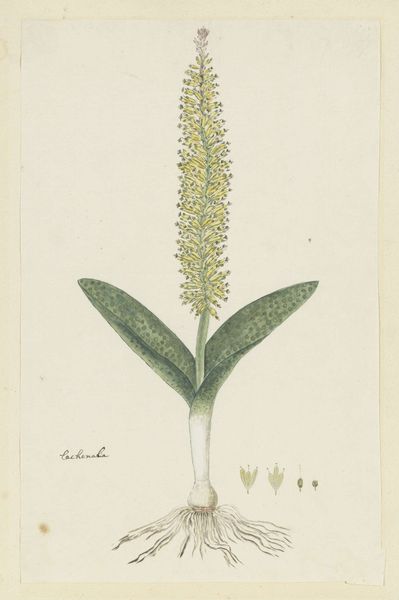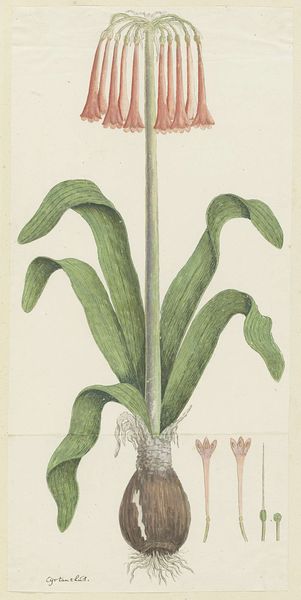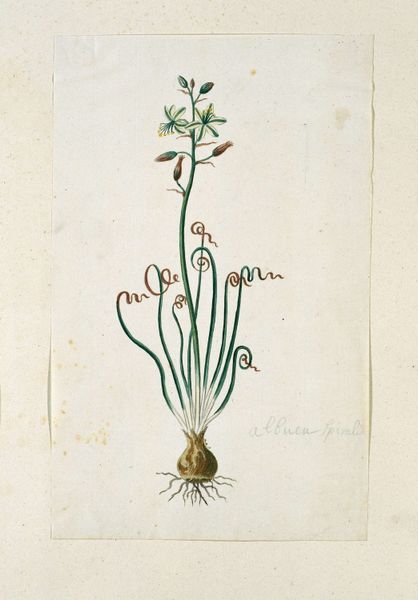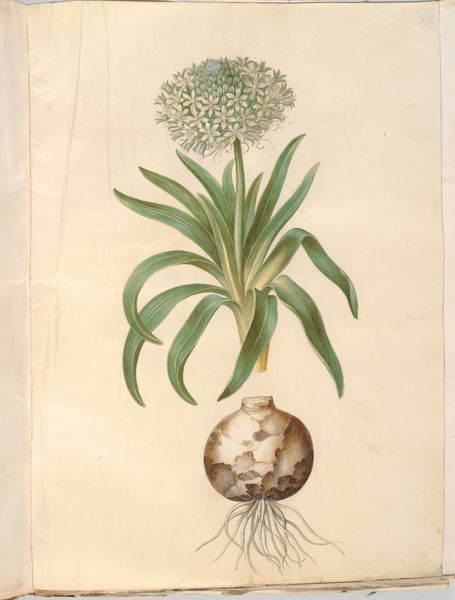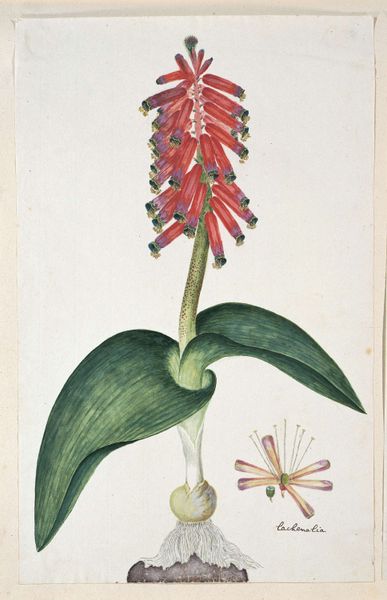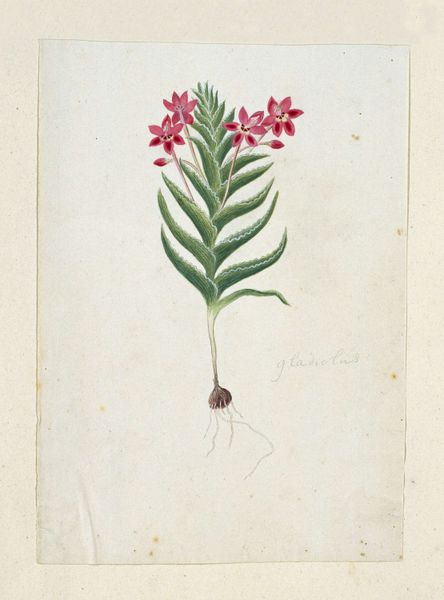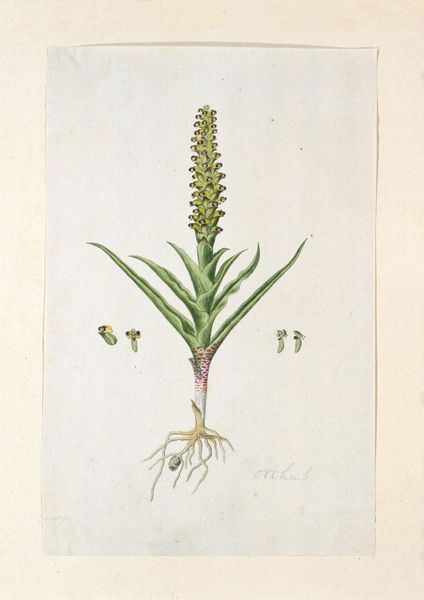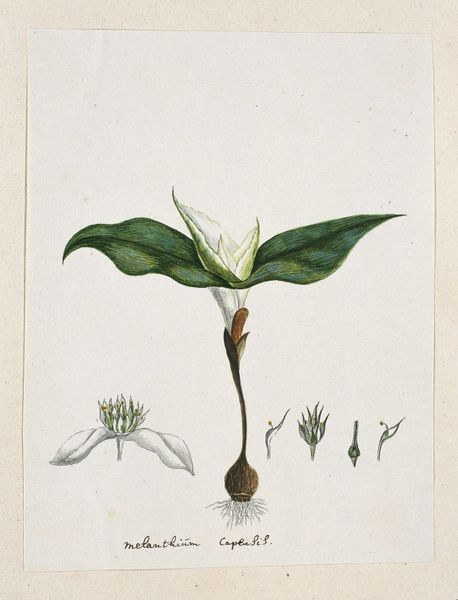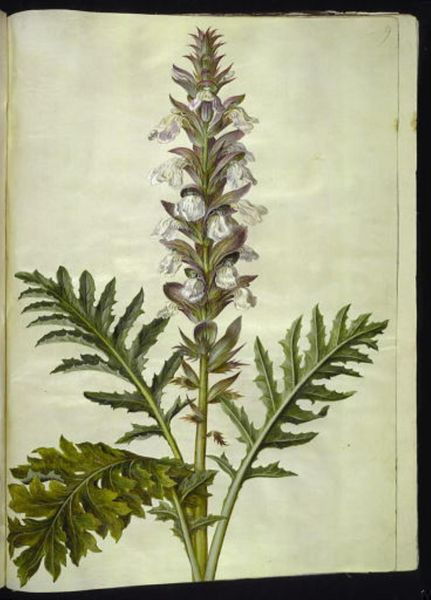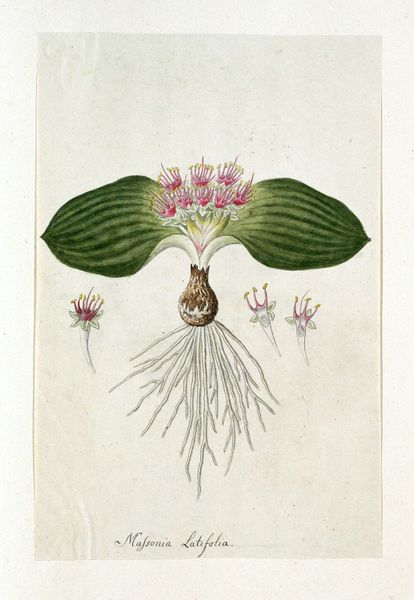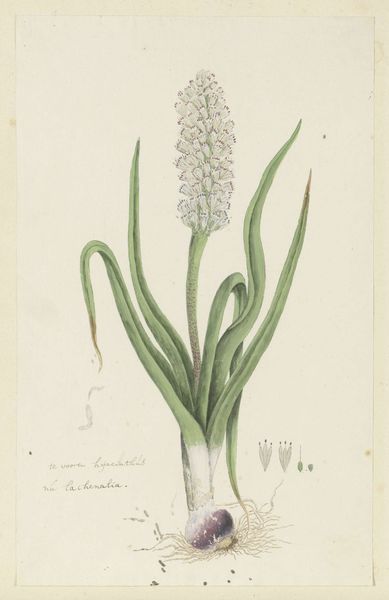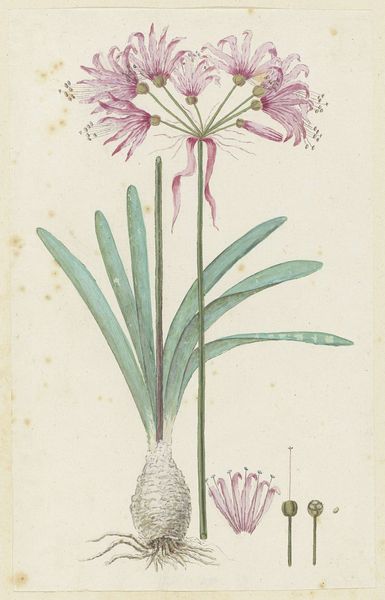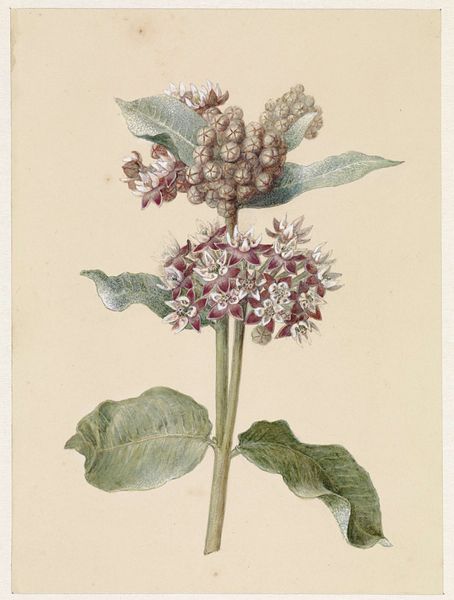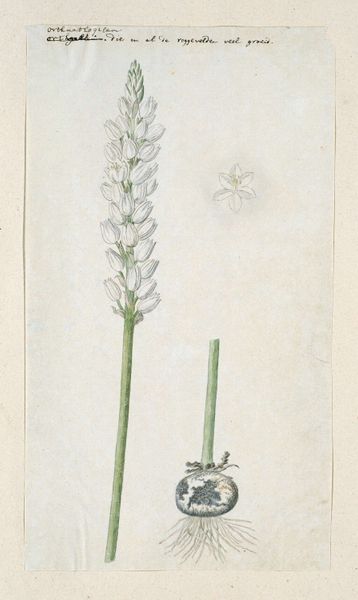
drawing, watercolor
#
drawing
#
water colours
#
landscape
#
watercolor
#
coloured pencil
#
botanical art
#
watercolor
#
realism
Dimensions: height 660 mm, width 480 mm, height 624 mm, width 402 mm, height mm, width mm
Copyright: Rijks Museum: Open Domain
Editor: This watercolor and drawing, entitled "Eucomis humilis Bak.," possibly from between 1777 and 1786, by Robert Jacob Gordon, strikes me with its botanical precision, especially how the flower stem's texture contrasts with the bulb and leaves. What do you notice about its formal qualities? Curator: Indeed. Note the rhythmic repetition within the floral structure. How the verticality of the central stem is counterpointed by the radial symmetry of the leaves and the smaller studies at the base. The artist employs a delicate color palette, focusing on gradations of green and subtle off-whites, guiding the viewer's eye from the base upwards. Do you see any underlying structure at play in the artist’s representational choices? Editor: I see how the textures and shapes repeat, but is it about showing a real flower? Is there meaning behind this order? Curator: Function follows form in the world of botany. Gordon is creating both an aesthetic image, but also a scientific record. Look closely at how each leaf is meticulously rendered, capturing its unique form and veining patterns. This level of detail contributes to both the visual appeal and the scientific accuracy of the botanical illustration. What is your response to that tension? Editor: That's a helpful perspective. I was getting lost in its order. I was trying to determine what exactly the botanical arrangement meant. I now understand how function also informs it's structure as a scientific depiction, which the artwork cleverly portrays by blending realism and botanical art into one composition. Curator: Precisely. Thinking about it beyond mere botanical depiction expands our engagement with the artist’s project.
Comments
No comments
Be the first to comment and join the conversation on the ultimate creative platform.
